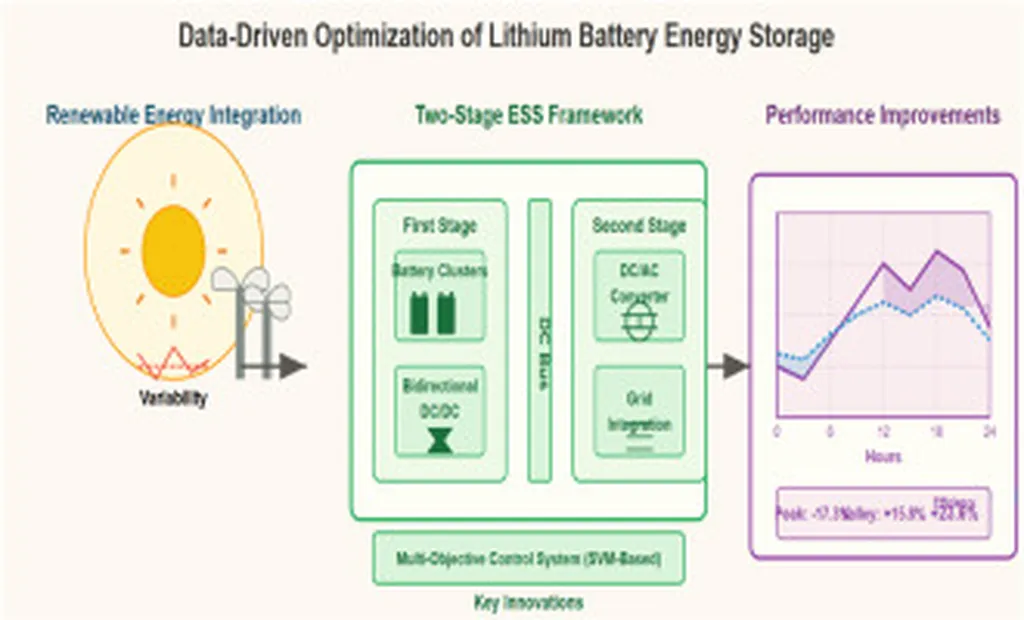In the rapidly evolving energy sector, the integration of renewable energy sources like wind and solar power, along with energy storage systems (ESSs), has become a cornerstone for achieving a sustainable and resilient power grid. However, this large-scale integration brings with it unique challenges, particularly in maintaining the transient stability of power systems. A recent study published in the journal *Applied Sciences* (in English) addresses these challenges head-on, offering a novel approach to enhance the fault ride-through (FRT) performance of energy storage systems.
The research, led by Liming Bo from the State Grid Shanxi Electric Power Company Electric Power Research Institute in Taiyuan, China, focuses on the data-driven identification of control parameters for voltage ride-through in energy storage systems. This is a critical area of study, as the dynamic response characteristics of these systems can significantly influence the stability of power grids.
“Parameter identification has become a crucial approach for analyzing ESS dynamic behaviors during high-voltage ride-through (HVRT) and low-voltage ride-through (LVRT) and for optimizing control strategies,” Bo explains. The study presents a multidimensional feature-integrated parameter identification framework for ESSs, combining a multi-scenario voltage disturbance testing environment built on a real-time laboratory platform with field-measured data and enhanced optimization algorithms.
One of the key innovations of this research is the proposal of a non-intrusive identification method for grid-connected control parameters. This method is based on dynamic trajectory feature extraction and a hybrid optimization algorithm that integrates an improved particle swarm optimization (PSO) algorithm with gradient-based coordination. “The results demonstrate that the proposed approach effectively captures the dynamic coupling mechanisms of ESSs under dual-mode operation (charging and discharging) and voltage fluctuations,” Bo notes.
The implications of this research for the energy sector are substantial. By relying on measured data for parameter inversion, the method circumvents the limitations posed by commercial confidentiality, providing a novel technical pathway to enhance the FRT performance of ESSs. This is particularly relevant in the context of high renewable energy penetration, where maintaining grid stability is paramount.
Moreover, the developed simulation verification framework serves as a valuable tool for security analysis in power systems. As the energy sector continues to evolve, the ability to accurately identify and optimize control parameters for ESSs will be crucial for ensuring the reliability and efficiency of power grids.
This research not only advances our understanding of ESS dynamic behaviors but also paves the way for future developments in the field. As Liming Bo and his team continue to explore these frontiers, the energy sector can look forward to more innovative solutions that enhance the performance and reliability of energy storage systems.

